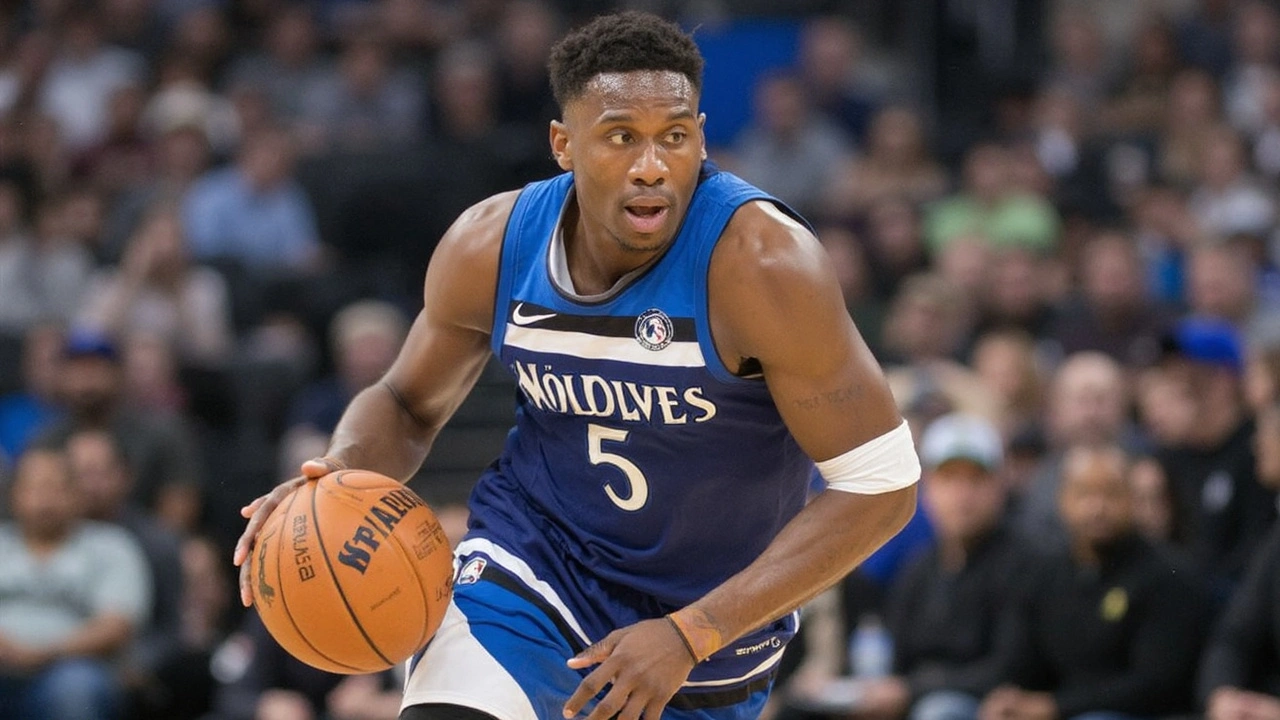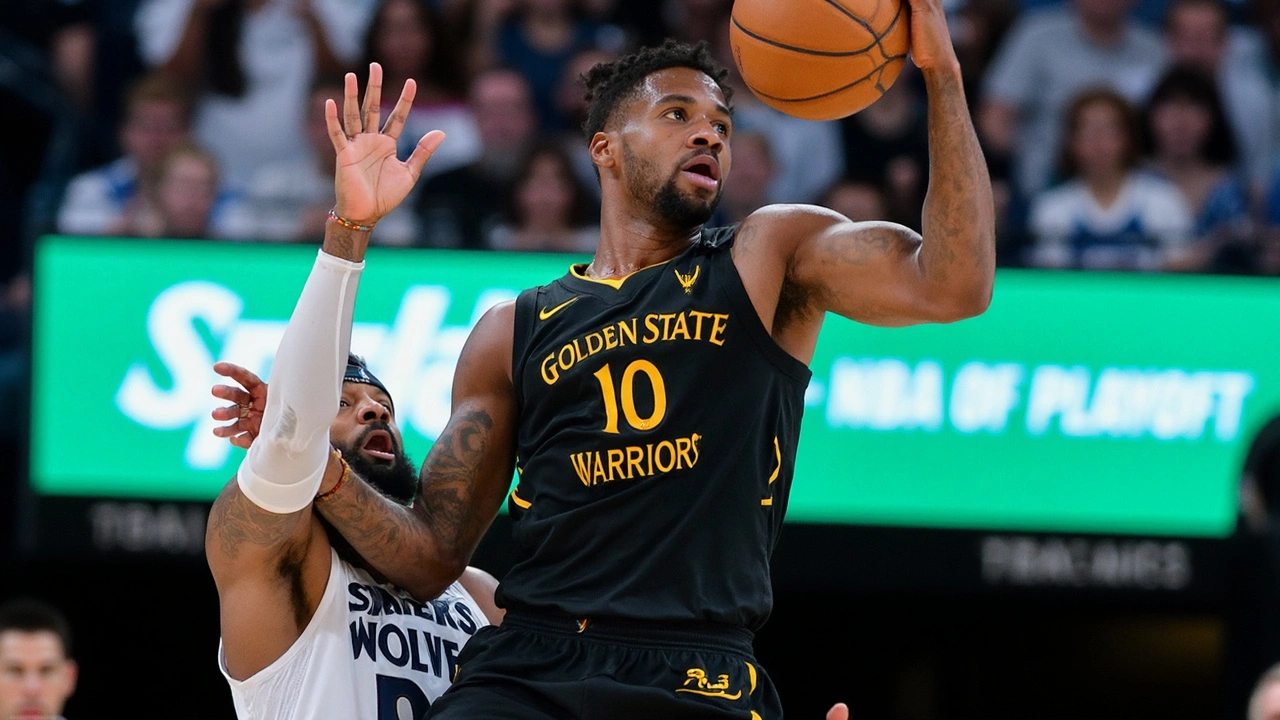Timberwolves Take Control as Warriors Grapple with Curry’s Absence
The NBA playoffs have thrown a real curveball this season, and it’s playing out in dramatic fashion between the Golden State Warriors and Minnesota Timberwolves. Going into Game 1, the chatter was all about Stephen Curry and Golden State’s chance to prove they’re still a postseason threat. But all that changed in a heartbeat when Curry limped off the court with a hamstring injury. The Warriors managed to close out Game 1 with a 99-88 win, mainly thanks to their scrappy defense and fast ball movement that stumped the Timberwolves. But the celebration was cut short — that twinge in Curry’s leg turned out to be a Grade 1 hamstring strain, ruling him out for at least the next two games and possibly longer.
Suddenly, Minnesota sensed a real opening, and boy did they capitalize. With Curry stuck in street clothes for Game 2, the Timberwolves didn’t hold back. Julius Randle stepped up in a way few expected, dropping a playoff career-high 24 points and dishing out 11 assists. Anyone who watched could see how contagious his energy was. The Warriors tried to dig deep, getting 18 points from Jonathan Kuminga, but without their superstar leading the charge, they just couldn’t keep up. Minnesota rolled to a commanding 117-93 win, and just that quick, the series was tied.
Game 3 was played on Golden State’s turf in San Francisco, but you wouldn’t know it from the way the Timberwolves refused to be bothered by the road crowd. The tension was thick, with every possession feeling like a mini-battle. Anthony Edwards cranked his game up, pouring in 36 points fueled by relentless attacks at the rim and some cold-blooded late buckets. Randle was right behind him, bringing steady production and confidence. Golden State’s offense sputtered when the game got tight, and the Timberwolves snagged a gritty 102-97 victory. All of a sudden, Minnesota had a 2-1 NBA Playoffs series lead, and Golden State was left scrambling for answers.

Key Players Step Up as Warriors Face Tough Road Ahead
With Curry still nursing his hamstring and unlikely to return before Game 6, the Warriors have a mountain to climb. The drop-off in offensive flow without their engine has been obvious, and it’s highlighted how much they lean on his presence, whether he’s shooting from deep or opening up space for others. Kuminga, Klay Thompson, and Draymond Green are trying to find new gears, but so far none have quite filled the leadership vacuum left behind.
The Timberwolves aren’t winning on luck alone — they’re getting big-time plays from up and down the roster. Nickeil Alexander-Walker’s 20-point outburst in Game 2 and steady defense from Jaden McDaniels have made Minnesota look deeper than ever. Jimmy Butler, while not as hot in the scoring column, keeps finding smart ways to contribute, diving for loose balls, setting screens, and making the Warriors’ life miserable on both ends.
Looking ahead to Game 4, there’s a sense that the next 48 minutes might decide who takes control for good. Minnesota’s confidence has ballooned, and they’re just two wins away from the Western Conference Finals—a place the franchise hasn’t seen in years. Meanwhile, the Warriors’ bench is being pushed into the limelight. Can they rediscover the magic that made them perennial contenders, or has Curry’s hamstring sidelined more than just one man?
Game 4 is on the calendar for Monday, May 12, and both sides know the stakes. For Golden State, it’s all about survival and keeping hope alive. For Minnesota, every possession feels closer to a breakthrough, with Randle, Edwards, and company eager to deal the decisive blow. Fans are strapped in, and with the way things have shifted, nobody can quite predict what’s next in this wild NBA Playoff battle.


Matt Heitz
It's disheartening to witness a franchise that once embodied the principles of resilience crumble under the weight of a single injured star. The Warriors' reliance on Curry reveals a systemic fragility, a symptom of a larger cultural malaise that champions individual brilliance over collective grit. In a league that glorifies the "one-man show," this playoff drama serves as a stark reminder that sustainable success demands depth, tactical rigidity, and an unwavering commitment to the team's ethos. When a nation looks to its heroes for inspiration, we must ask whether we are celebrating true merit or merely the illusion of greatness.
Susan Mark
From a strategic standpoint, Minnesota’s adjustments have been impressive. Randle’s 24‑point, 11‑assist line shows how versatile forwards can swing momentum, while Edwards’ 36 points underscore the value of aggressive floor spacing. The Timberwolves’ defensive rotations have also limited Golden State’s second‑chance opportunities, which explains the widening margin.
Jason Jennings
The Warriors are just overhyped.
Diego Vargas
Yo, let me break it down real quick – the Warriors' offense is a textbook case of over‑reliance on a single shooter, and when that shooter’s out, the whole system kinda stalls. It’s not just about Curry; it’s about how the ball moves when the primary catalyst is missing, and honestly, the secondary options just aren’t cutting it. If you look at the advanced metrics, there’s a drop in offensive rating of about 12 points per 100 possessions. That’s a huge dip. So yeah, the Timberwolves are capitalizin’ on that weakness, no big surprise.
Alex Lee
Warriors suck without Curry. Timberwolves win.
Vida Yamini
First of all, let me say how proud I am of the Timberwolves for showing such tenacity and heart in the face of adversity; it’s not every day you see a team step up when the odds are stacked against them, and they did it with a level of grit that deserves recognition across the league.
When we examine the box scores, we notice that Julius Randle’s double‑double performance was not just a random outburst but a testament to his preparation and the coaching staff’s ability to design plays that maximize his skill set, especially in the paint where he leveraged his size and footwork.
Moreover, Anthony Edwards’ 36‑point explosion showcases how a young star can evolve his game, blending mid‑range precision with aggressive slashing to keep the defense guessing, which in turn opens up opportunities for teammates like McDaniels and Alexander‑Walker to contribute effectively.
On the defensive side, the Timberwolves displayed commendable discipline, executing rotations that forced the Warriors into low‑percentage shots, a strategy that not only limited Golden State’s scoring but also boosted Minnesota’s transition opportunities, leading to fast‑break points that shifted momentum.
It’s also worth noting the psychological edge gained by taking a series lead; confidence is a contagious commodity, and when a team believes it can dominate, that belief often translates into better execution under pressure.
From a broader perspective, this series underscores the importance of depth in a playoff setting; relying on a single superstar is a fragile approach, as seen with the Warriors’ struggles in Curry’s absence, whereas a balanced roster can adapt and thrive.
Let’s also give credit to the bench players who stepped up when called upon, providing the spark needed to sustain high energy levels throughout the grueling five‑game stretch.
In terms of coaching, the adjustments made at halftime reflect a keen awareness of the game’s flow, allowing Minnesota to capitalize on mismatches and exploit the Warriors’ defensive lapses.
Finally, fan support has been instrumental; the energy from the crowd, both in person and online, creates an environment where players feel empowered to give their all, and that collective enthusiasm fuels performance on the court.
James Lawyer
The data from the last three games indicate a statistically significant shift in offensive efficiency favoring the Timberwolves, which aligns with the strategic modifications observed on court. It is noteworthy that the Warriors’ secondary scoring options have not yet demonstrated the requisite consistency to mitigate the loss of their primary playmaker. Consequently, the series trajectory appears to be increasingly contingent upon Minnesota’s capacity to sustain defensive intensity while exploiting transitional opportunities.